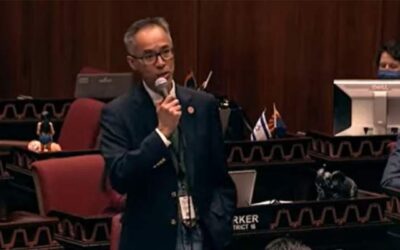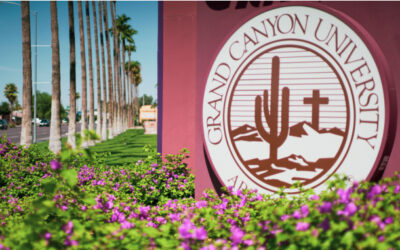By Corinne Murdock |
The city of Phoenix is looking to expand its public transit system by adopting a new busing route that connects to light rail, a type referred to as “Bus Rapid Transit” (BRT). The city held a public meeting last Tuesday to discuss the proposed expansion. This would be the first BRT in Phoenix.
BRT is a busing system that incorporates the speed and capacity of light rail systems. The approved BRT system will span along 35th Avenue from Trail Inn Lodge/W. Van Buren Street, where it stems from Central Station and intersects the light rail system, to Cheryl Drive, where it runs up to Black Canyon Highway and intersects the light rail. There are 16 proposed BRT stations.
Where regular busing systems carry about 60-80 passengers on freeways and use High Occupancy Vehicle (HOV) lanes during the morning and evening, mainly for commuters, with limited stops near the beginning and end of their route, BRT carries 100-150 passengers throughout the day on major roads with prioritized right-of-ways like bus lanes.
BRT is part of the city’s 2050 plan, approved in 2015. The city notes that exact costs for the BRT haven’t been determined yet.
The city will go forward with its plan to expand public transit options as ridership has faced an overall decline over the past five years. Ridership dropped from 2018 to 2021 before increasing slightly in 2022. According to available Valley Metro data, ridership for February 2022 was the exact same as ridership for January 2023 — indicating that ridership may not increase from last year’s totals.
From 2018 to 2019, ridership dropped by 2.4 million; from 2019 to 2020, ridership dropped by 11.85 million; from 2020 to 2021, ridership dropped by 25.19 million; and from 2021 to 2022, ridership recovered by 4.5 million.
BRT is generally customizable to the needs of each city, generally including these key elements: advanced fare collection through methods like mobile apps, smart cards, or ticket kiosks; road modifications to prioritize busing like queue jump lanes, bus-only lanes and corridors, turn restrictions, or extended green lights and shortened red lights; expansive bus stations with canopies, seating, travel information screens, and ticket vending machines; and customized buses with amenities like USB charging ports and space for bikes.
Over 160 cities globally have BRT systems. Major cities in the U.S. with BRT systems include Las Vegas, Nevada; Los Angeles, California; Cleveland, Ohio; Albuquerque, New Mexico; Kansas City, Missouri; Minneapolis, Minnesota; Seattle, Washington; Omaha, Nebraska; Provo-Orem, Utah; and Houston, Texas.
According to the Institute for Transportation & Development Policy (ITDP), none of those cities’ BRT systems ranked high for meeting the BRT Standard. The standard rates are based on best practices: safety, operations, design, right-of-way dedication, busway alignments, and onboard fare validation.
The Phoenix City Council first approved the BRT system in October 2021.
Corinne Murdock is a reporter for AZ Free News. Follow her latest on Twitter, or email tips to corinne@azfreenews.com.








